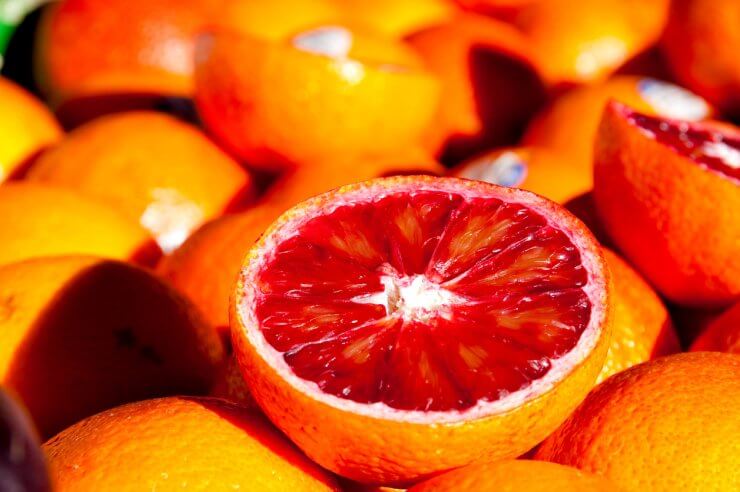
Blood oranges
It seems there are more types of citrus casually called orange than you can shake a zester at. While there are hundreds of different varieties of oranges throughout the world, for this collection, we’re looking at two broad categories of oranges that are popular with home gardeners in the U.S.
- Sweet oranges (Citrus sinensis)
- Sour (bitter) oranges (Citrus aurantium)
These species are classified as members of the Rutaceae (citrus) family.
Here’s an overview of these two broad categories of oranges:
Sweet oranges (C. sinensis)
These include three main groups of oranges:
- Navel: These oranges have a secondary fruit at the bottom, like a little belly button, opposite the stem end. Navel oranges are easy to peel and are usually seedless. The Washington navel orange is the most popular backyard tree in the U.S. Navel oranges are the most common oranges you’ll find to peel and eat; they’re very user-friendly.
- Blood: The blood orange is similar to the navel orange, but, as its name suggests, it has deep red flesh—except when it’s grown at high temperatures. Blood oranges are easy to peel, and they’re super juicy. They’re delicious in salads and sauces, and they make a great marmalade.
- Valencia: If you like orange juice, you know the Valencia orange. The Valencia orange is grown specifically for its juiciness. This type of sweet orange has a thin skin and a lot of seeds—but mostly a lot of juice!
Sour oranges (C. aurantium)
There’s no solid agreement on the members of this category, but there are loosely three groups here:
- Seville: This sour orange is the sweetheart of the marmalade industry.
- Bergamot: This is the orange whose peel gives Earl Grey tea that distinctive taste and aroma. It’s also used in the perfume industry.
- Trifoliate: Trifoliate orange trees are native to China and Korea, where their fruit is used to make marmalade. They’re not commonly grown in the U.S., although some cultivars are available, and they are very cold-hardy. This type of sour orange tree is best known for being the rootstock for many more commonly-grown cultivars.
Which type of oranges have you grown? Do you have a preference? Please share your opinion.


 Previous
Previous

